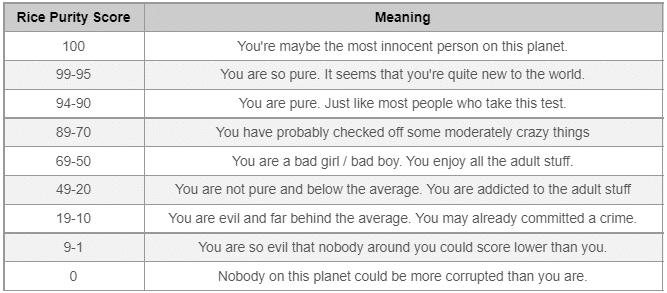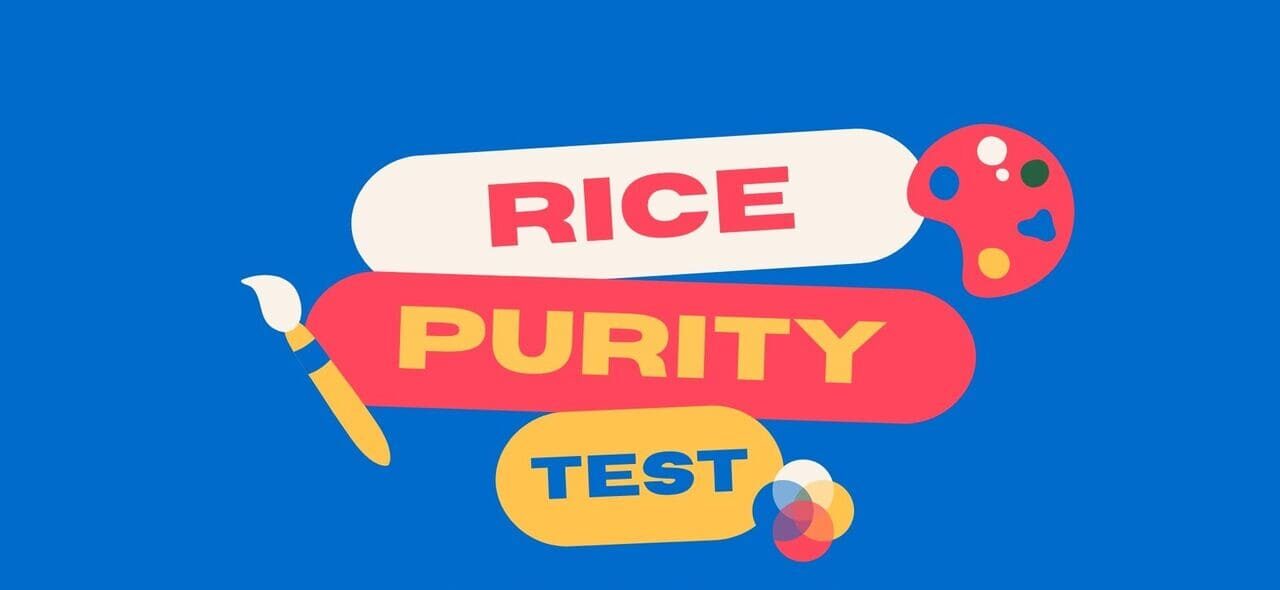The Rice Purity Test is a fascinating cultural phenomenon that has intrigued young adults for decades. Originally created at Rice University, this test consists of 100 questions designed to measure a person’s “innocence” or life experiences. It’s especially popular among college students as a fun way to reflect on personal growth and shared experiences.
| Key Takeaways | Description |
|---|---|
| Purpose | Measures life experiences and “innocence.” |
| Format | 100 questions covering various aspects of life. |
| Origins | Created at Rice University in the 1930s. |
| Popularity | Widely used among college students and on social media. |
What is the Rice Purity Test?

Rice Purity Test
The Rice Purity Test is essentially a self-assessment tool that asks participants to answer 100 yes-or-no questions about their life experiences. These questions cover a wide range of topics, including relationships, substance use, and personal conduct. The idea is to gauge how “pure” or experienced someone is based on their responses.
Origins and Historical Context
The test was developed at Rice University in the 1930s as a way for students to measure their moral and ethical standards. Over time, it evolved from a simple campus tradition into a global cultural touchstone, thanks in part to its adoption by other universities and its spread via the internet.
Why Has It Stood the Test of Time?
- Relatability: The questions touch on common experiences that many people encounter during their teenage and young adult years.
- Social Interaction: Sharing scores with friends can spark conversations and create bonds over shared experiences.
- Nostalgia: For many, taking the test is a rite of passage that evokes memories of youth and discovery.
How to Take the Rice Purity Test
Taking the Rice Purity Test is straightforward:
- Access the Test: You can find it online with a simple search.
- Answer Honestly: Go through each question and answer yes or no based on your experiences.
- Calculate Your Score: Each “no” answer gives you one point, resulting in a score between 0 and 100.
Here are some examples of typical questions:
- Have you ever held hands romantically?
- Have you ever consumed alcohol?
- Have you ever been arrested?
These questions aim to cover a broad spectrum of experiences, from innocent to more mature activities.
Interpreting Rice Purity Scores

Interpreting Rice Purity Scores
Understanding your Rice Purity Test score can offer insights into your life experiences. Here’s a breakdown of what different score ranges generally indicate:
- High Score (70-100): This range suggests high levels of innocence and fewer life experiences. It typically reflects someone who has engaged in fewer adult activities.
- Mid-Range Score (40-69): This score indicates moderate life experiences. It shows that the person has tried some things but remains relatively innocent in other areas.
- Low Score (0-39): A low score reflects extensive engagement in various activities, which may include more risky or adult behaviors.
Cultural Impact and Popularity
The Rice Purity Test has become more than just a list of questions; it’s a cultural rite of passage for many college students. Here’s why it continues to resonate:
- Rite of Passage: For many, taking the test is a fun and engaging way to reflect on their experiences and share with others. It’s often seen as a bonding activity among peers.
- Social Media Influence: The test has gained traction on platforms like TikTok, leading to viral challenges and increasing its popularity. People enjoy sharing their scores and comparing them with friends.
- Community Building: Sharing scores fosters community and dialogue among peers about personal growth and experiences, helping to create a sense of belonging.
Criticisms and Controversies

Criticisms and Controversies
Despite its popularity, the Rice Purity Test is not without its criticisms:
- Judgmental Nature: Some argue that the test promotes a judgmental attitude towards individuals based on their life choices. It can create pressure to conform to certain norms.
- Inclusivity Concerns: The test may not accurately reflect everyone’s experiences, leading to feelings of inadequacy or pressure to fit in.
- Shifting Norms: As cultural norms evolve, some questions may no longer be relevant or appropriate, questioning the test’s validity and relevance in modern times.
Conclusion
The Rice Purity Test remains a fascinating glimpse into how we view innocence and experience. While it can be a fun way to reflect on personal growth, it’s important to approach it with an understanding of its limitations and cultural context. Whether you’re taking it for nostalgia or curiosity, remember that it’s just one lens through which to view your life’s journey.
For more insights into cultural phenomena and how they shape our understanding of the world, explore articles on other interesting topics like Giga Chad or Fanfiction. Keep exploring the diverse world of online culture!
